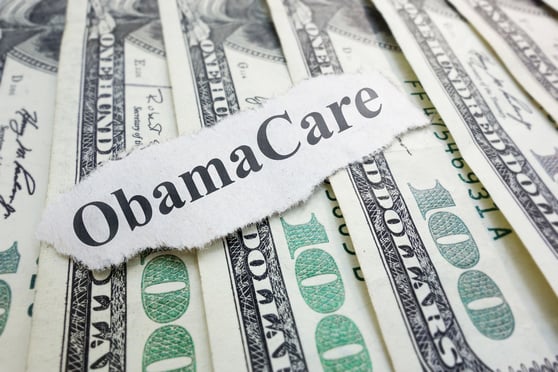It’s estimated that over 300,000 emergency room visits each yearare due to opioid misuse. And it’s not just emergencyrooms that are affected — workplaces are too. Employees misuseprescription medications to improve job performance, overcome lackof sleep, or to alleviate pain. Other employees are affected by theopioid crisis at home, when their family (children and agingparents) misuse as well.
|There are clear implications for employee health, absenteeism,productivity, and safety. In late 2016, two national surveysindicated the need for more Rx misuse prevention in workplaces.Although 70 percent of employers are negatively affected by Rxmisuse, less than 25 percent actually educate workers onprevention. Also, at least 30 percent of employers provide noaccess to alternative treatments that can be especially helpful inaddressing pain.
|Most company approaches to prescription drug abuse focus on harm reductionand risk mitigation, versus prevention, which begins withawareness. This reactive mind-set is not surprising given newsstories on the crisis focus on the supply side (theover-prescription problem) and treatment. Moreover, standard drugtesting only goes so far in addressing the problem, as these are,ostensibly, prescribed drugs.
|Almost no attention has been given to training employees throughproactive prevention and awareness. Indeed, employee training isthe strongest driver of employer preparedness to deal with theproblem. A proactive approach can help those at risk for, andactual misusers of, Rx drugs. This can save employers greatly onboth medical and productivity costs. A recent cost calculatordeveloped by researchers helps employers estimate costs associatedwith employee substance abuse in general.
|The nationwide crisis presents brokers with a timely opportunityto deliver a real solution. Employers can now use evidence-basedworksite programs that engage employees at the earliest stages oftheir Rx use in a non-threatening way and steer them (and theirfamily members) to safe alternatives. This article will demonstratewhat such an evidence-based program ought to look like, theirefficacy, how to implement them, and the corollary benefits thataccrue to brokers who promote such programs.
|Awareness + training = prevention
|The way the Center for Disease Control (CDC ) operates itsalert and advisory systems for threats is instructive. Just witnesshow the agency contained the Zika outbreak.The CDC’s alerts wentbeyond warnings to communities across the U.S. They took proactive,coordinated steps, from controlling mosquito populations, toeliminating the conditions By doing so, the CDC was able to addressboth the sources of the disease and the conditions that promotedits spread. A similar approach to the prescription drug crisiswould likewise address the problem at its root: dealing with theunderlying conditions that prompt Rx misuse, and raising awarenessto promote more responsible, health conscious behaviors.
|We recently conducted a study that focused on improving employeehealth consciousness around Rx misuse. The study showed thatemployees who participated in the training improved their knowledgeof and attitudes toward Rx misuse. Specifically, over 100 workersfrom different worksites showed significant increases in theirknowledge of alternatives to Rx drugs for pain, energy, mood, andstress. Also, the program can help to destigmatize substance abuseprevention (and treatment) and improve overall employeewell-being.
|Best practices model
|The program was one of two programs singled out in the SurgeonGeneral’s landmark 2016 report, "Facing Addiction in America," forbeing the only ones that met their criteria for effective workplaceprevention of substance abuse.
|Findings point to the efficacy of early intervention via asimple one-hour onsite or web-based training. It is easy toincrease employee knowledge of prescription drug use, misuse, and —most importantly — health-based alternatives when offered through ahealth benefits package, employee assistance, or wellness program.The positive outcomes from this research align with the stringentcriteria that Substance Abuse and Mental Health ServicesAdministration’s (SAMHSA) has laid forth for exemplary programs.SAMHSA’s guidelines for evidence-based programs, if properlyimplemented at the worksite, can effectively educate a sizeableportion of at-risk employees who are otherwise hard to identify,let alone reach.
|How to implement
|A simple lunch and learn can incorporate many tips andguidelines for employees. There are many such resources available.We suggest that this program be delivered by the company wellnesscoordinator, trainer, or HR professional who also has awareness of policies andbenefits. The following three key factors should be included toensure positive outcomes:
Emphasize a positive, strengths-based message that focuses onhealth consciousness: We each have the ability to takeresponsibility for our awareness of personal and family healthissues before they become a problem.
Explain that health consciousness has three aspects:
Be conscious of the primary motives behind using Rx drugs (e.g.,for pain, sleep, energy, anxiety, concentration).
Know the risk/benefits of using prescription drugs; and
Know healthy alternatives to such use (making sure to tie in anyand all benefits available from the employer).
Review personal scenarios of most relevance to employees. Thesecan include topics such as dealing with an aging parent who may bemisusing, talking to teenagers and pre-teens, monitoring anddispensing of one’s own use, avoiding sharing of Rx drugs withcoworkers, etc.
Broker benefits
|Brokers stand to benefit greatly by making clients aware of thislow-cost, public health approach for many reasons, including:
Timely. It’s a timely deliverable thattranslates into lowered medical and productivity costs(absenteeism/presenteeism, etc).
Positive. Many negative articles in the newsfocus on the problem. You can be different by bringing positivenews. You have an easy employer/employee “touch point” thatpresents a more solutions-oriented approach
Alignment. Employee prevention education easilyintegrates with various benefits you already know about. Acompany’s EAP and/or well-being initiative can be an effectivedelivery mechanisms for prescription drug education and prevention.You can help employers take a big picture or integrative approachand bring much needed relief to an increasingly critical employerpain point.
Engagement. Prevention education is also a “tipof spear” for addressing the employee engagement problem. While theprogram engages employees on the particular issue of Rx misuse,it’s an opportunity to engage workers on other company sponsoredprograms, and raise awareness of them. You can help reinforce yourclient’s message that they care about their team.
Conclusion
|Prevention programs can be a hard sell, and it’s a challenge todemonstrate a concrete business return. Employers need to know thatworksite awareness and education programs can be very effective inengaging people at the earliest stages of their Rx use and in anon-threatening way, steer them to safe alternatives. Brokers havethe opportunity to reap the benefits of implementing and supportingsuch a program that has the potential to affect tens of thousandsof individuals within their networks.
Complete your profile to continue reading and get FREE access to BenefitsPRO, part of your ALM digital membership.
Your access to unlimited BenefitsPRO content isn’t changing.
Once you are an ALM digital member, you’ll receive:
- Critical BenefitsPRO information including cutting edge post-reform success strategies, access to educational webcasts and videos, resources from industry leaders, and informative Newsletters.
- Exclusive discounts on ALM, BenefitsPRO magazine and BenefitsPRO.com events
- Access to other award-winning ALM websites including ThinkAdvisor.com and Law.com
Already have an account? Sign In
© 2024 ALM Global, LLC, All Rights Reserved. Request academic re-use from www.copyright.com. All other uses, submit a request to [email protected]. For more information visit Asset & Logo Licensing.








